As an emerging polymath working across the disciplines of Public Policy, Design and Human Health, often ideas appear as insights to me. These visions emerge as constellations across domains that are either related or tangential. I am using this page to broadcast those concepts into the Cyberspace, hoping they may find a curious audience somewhere and open doors for future collaboration.
I am working across the three core concerns of Climate Change, Construction Culture & Urban Planning, trying to apply what little I know from design, urban planning and AI enabled visualization to solve these problems.
First: Urban Heat Island effect Mitigation
Second: High Density Urban Mobility Solutions
Third: Low Cost Food Cultivation & Preservation Systems
Urban Bike Parking Designs: Using Plant based Biomimicry
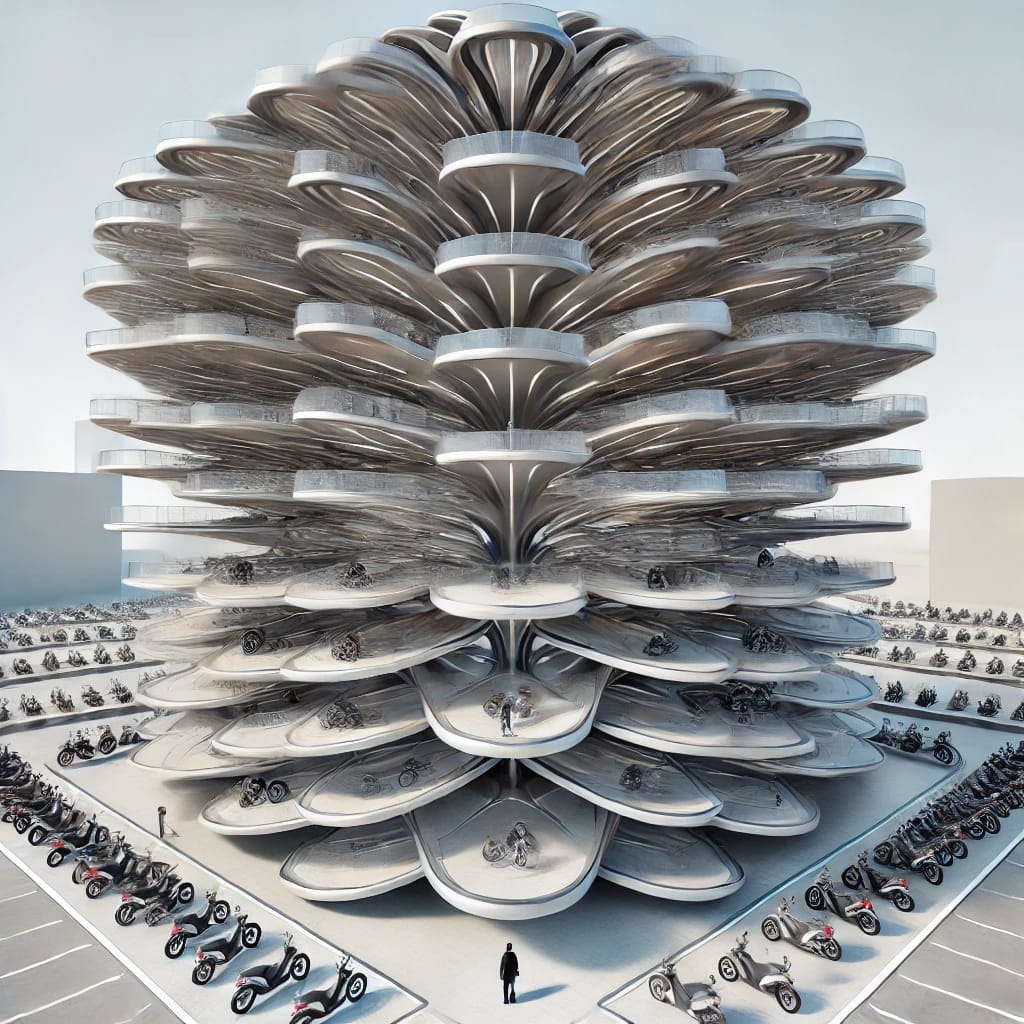

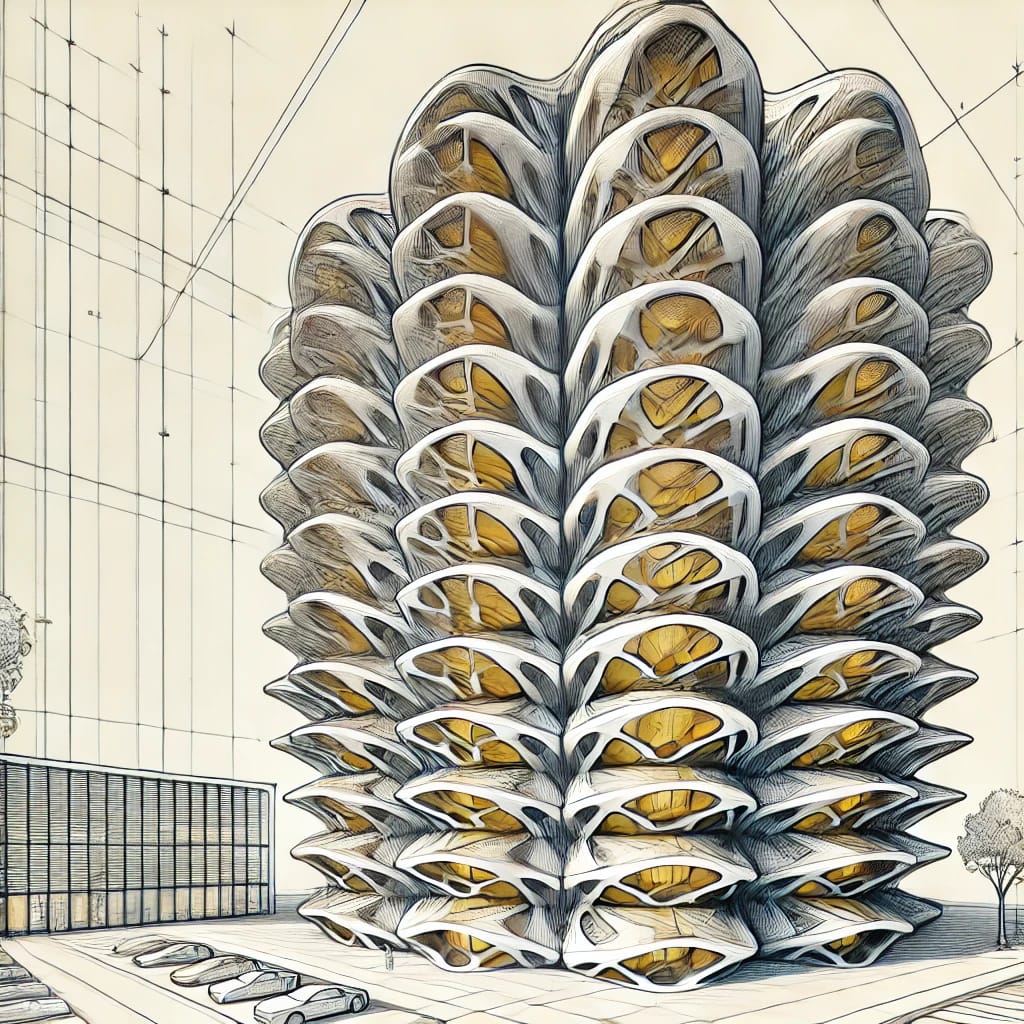
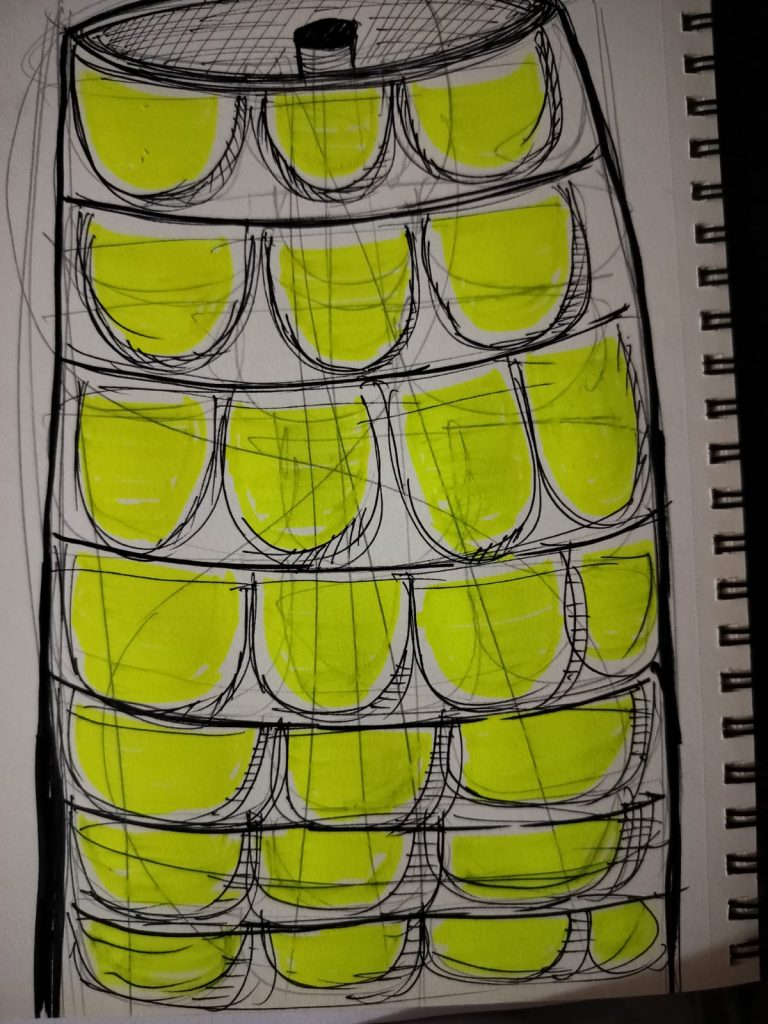
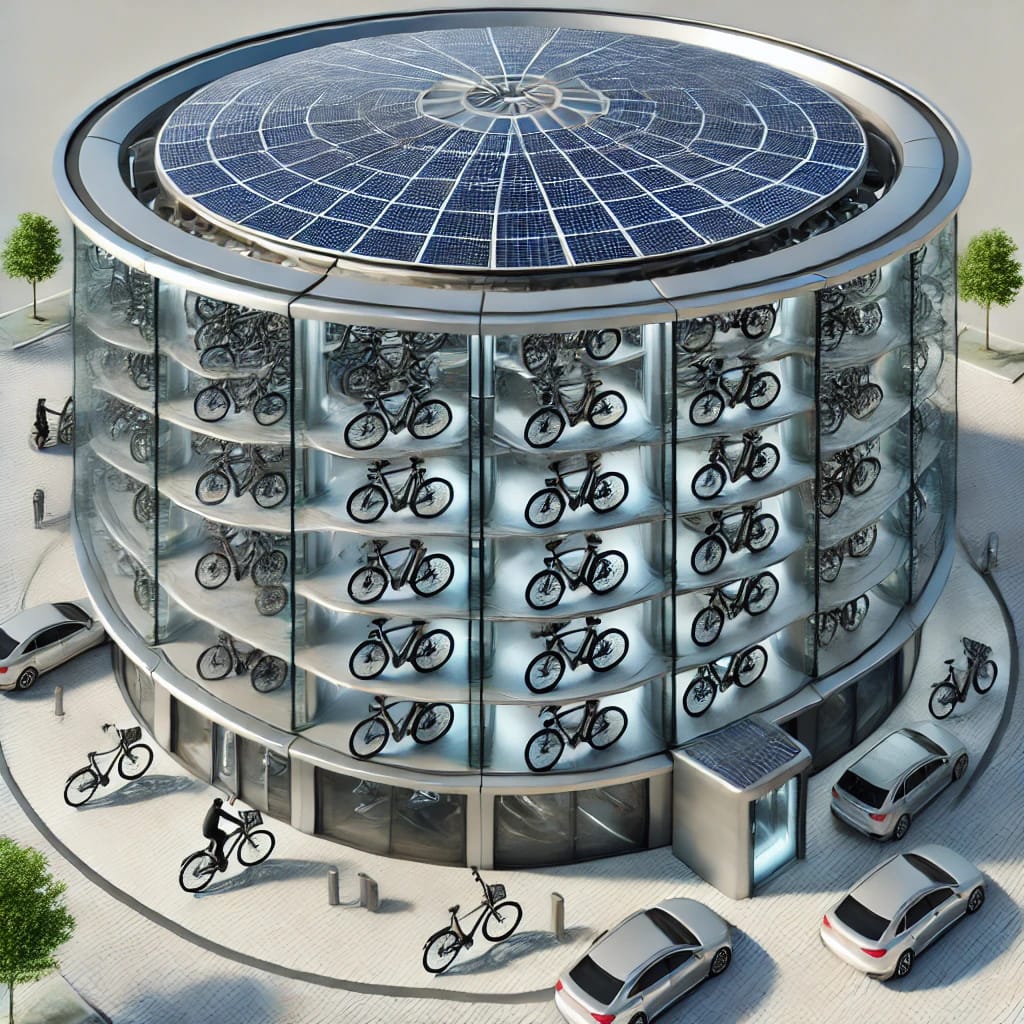
Terracotta Cool Rooms: Urban Heat mitigation for Indian Cities
India is going through an “Urban Heat Wave” crisis. Being turbocharged both by Climate Change and the Urban Heat Island Effect. Disrupted Water Cycles, Poor Building Codes, Non-existent Local Capacity for ground level Urban Innovation has only exacerbated the crisis.
India has experienced a significant increase in heatwave occurrences over the past decades, with notable variations across different time frames and regions. Understandably the drier and hotter Northern and North Western regions of the country is suffering more from Heat Waves over the last two decades.
Since 1956, from when Heat Wave Data is publicly available, the highest recoded temperature has more or less has only gone up across the country from 50.6 °C in 1956 to 52.9 °C in 2024. This is unprecedented rise of 2.3 °C increase of max temperature during heat waves.
Heatwave Trends Over Time:
In the last 10 Years (2011–2020) the number of heatwave days have increased to approximately 600 days. That is over 50% more heatwave days than the decade previous to it. Which means that in the last decade, India spent about Two (2) Whole years in heatwave. This is an unprecedented stress on India’s Urban and Medical systems; one for which it is not cut out out to handle.

We need an urgent scalable solution to this heatwave crisis, particularly in very densely populated and constructed Urban Zones in India. The situation is much worse in the Informal Settlements of India’s cities, more popularly known as the infamous India’s slums. These informal urban settlements are set to become India’s Kill Zone during ‘heatwaves.’
These clusters of informally constructed, unregulated and unplanned urban communities housing migrants and the urban poor in India’s Tier 1 and Tier 2 cities; act as unintended but highly efficient baking ovens. Cooking our unfortunate fellow citizens to death, from urban apathy and lack of low cost solutions that can be applied at scale by either City or State Governments.
Enter my proposed solution, low cost and sustainable cooling through Insulated Terracotta Rooms. The idea for this innovation came to me, in Bhubaneswar in 2024, when for a single day it was the hottest city in India.
But many of the the 1200 odd temples of the Temple city were not only cool on the inside, they acted as an unofficial refuge to birds and small animals. The reason, high insulating quality of Stone and Elevated ceilings of these ancient architectural masterpieces.
Terracotta Cools Rooms: Each of these cool rooms are envisioned to have a multi layered hollow walls, lowering heat conduction from surface exposure. There will be micro-channels in these, walls connecting a lower rain water conservation chamber to the air through micro openings in the ceiling, creating heat exchanges through Water Vapour evaporation.
This process also activates a slow convection current in the room, cooling it down by keeping the heavy cooler air closer to the ground and allowing the hot air from the room to escape through the micro openings in the ceiling. I have added a gallery of my own sketches and AI enhanced versions of them below.
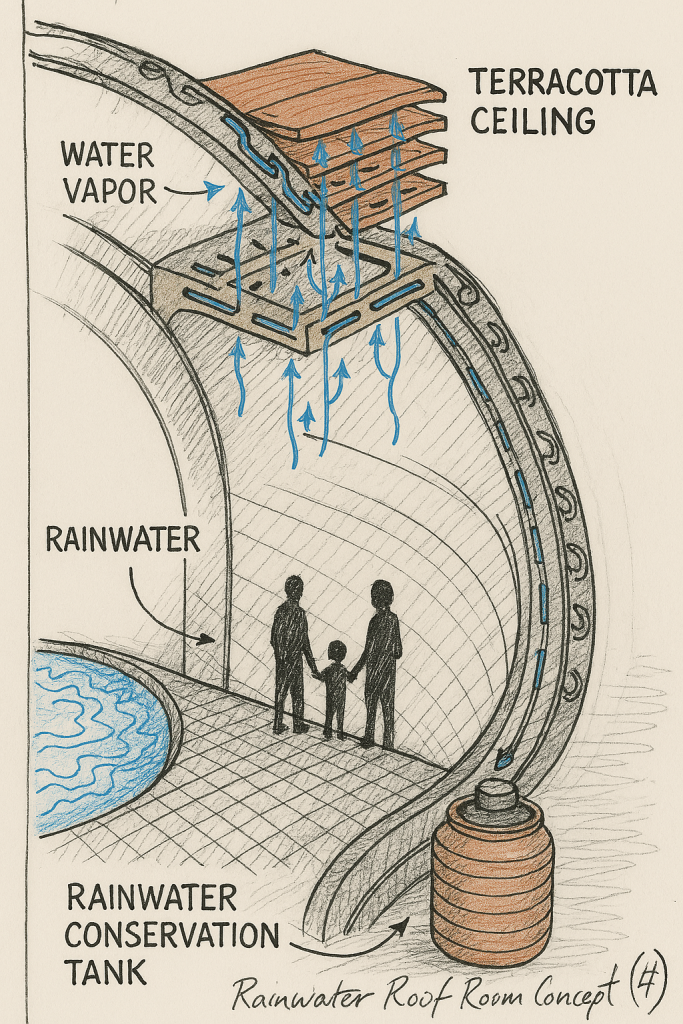
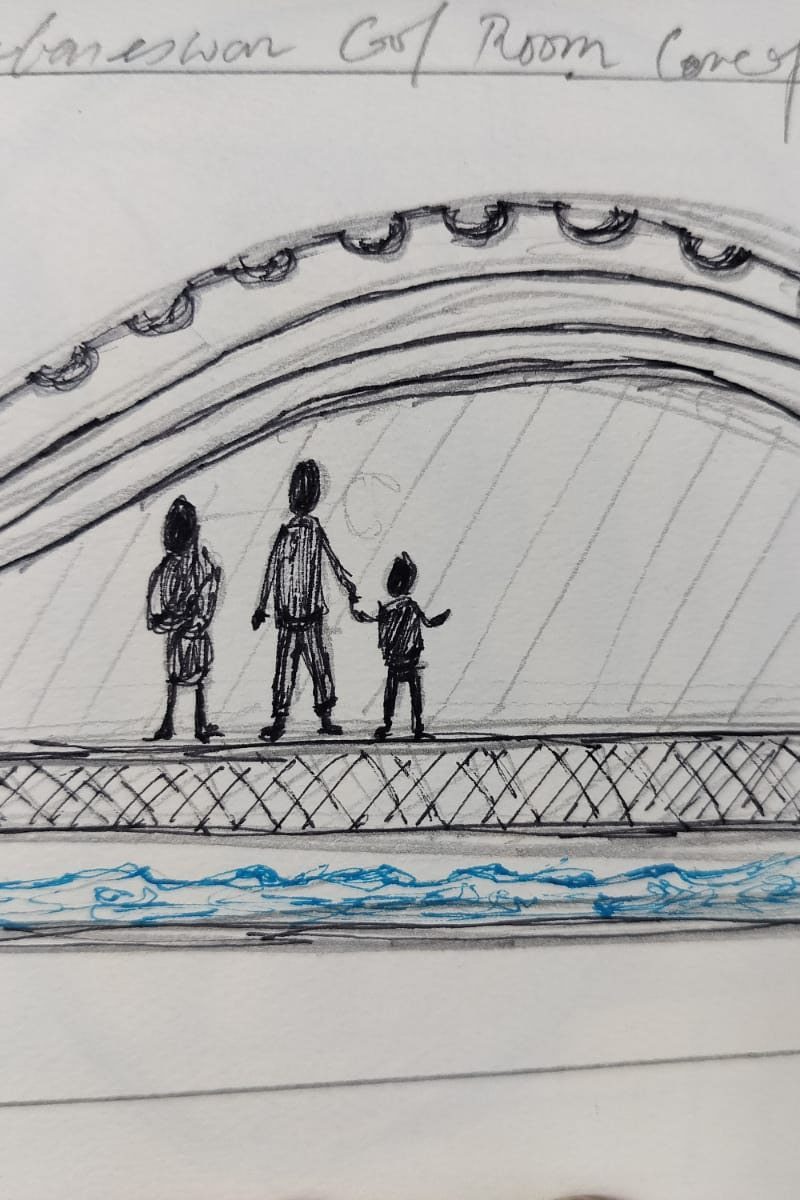
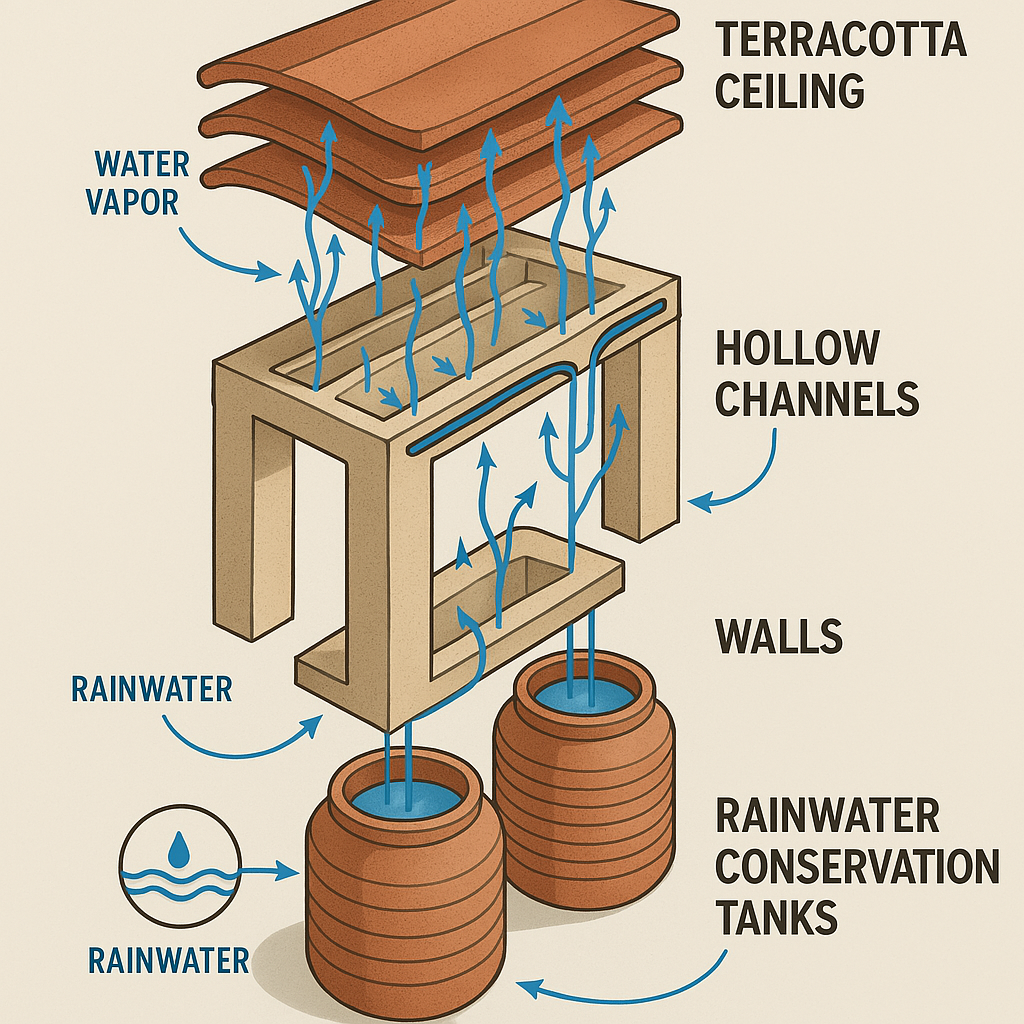
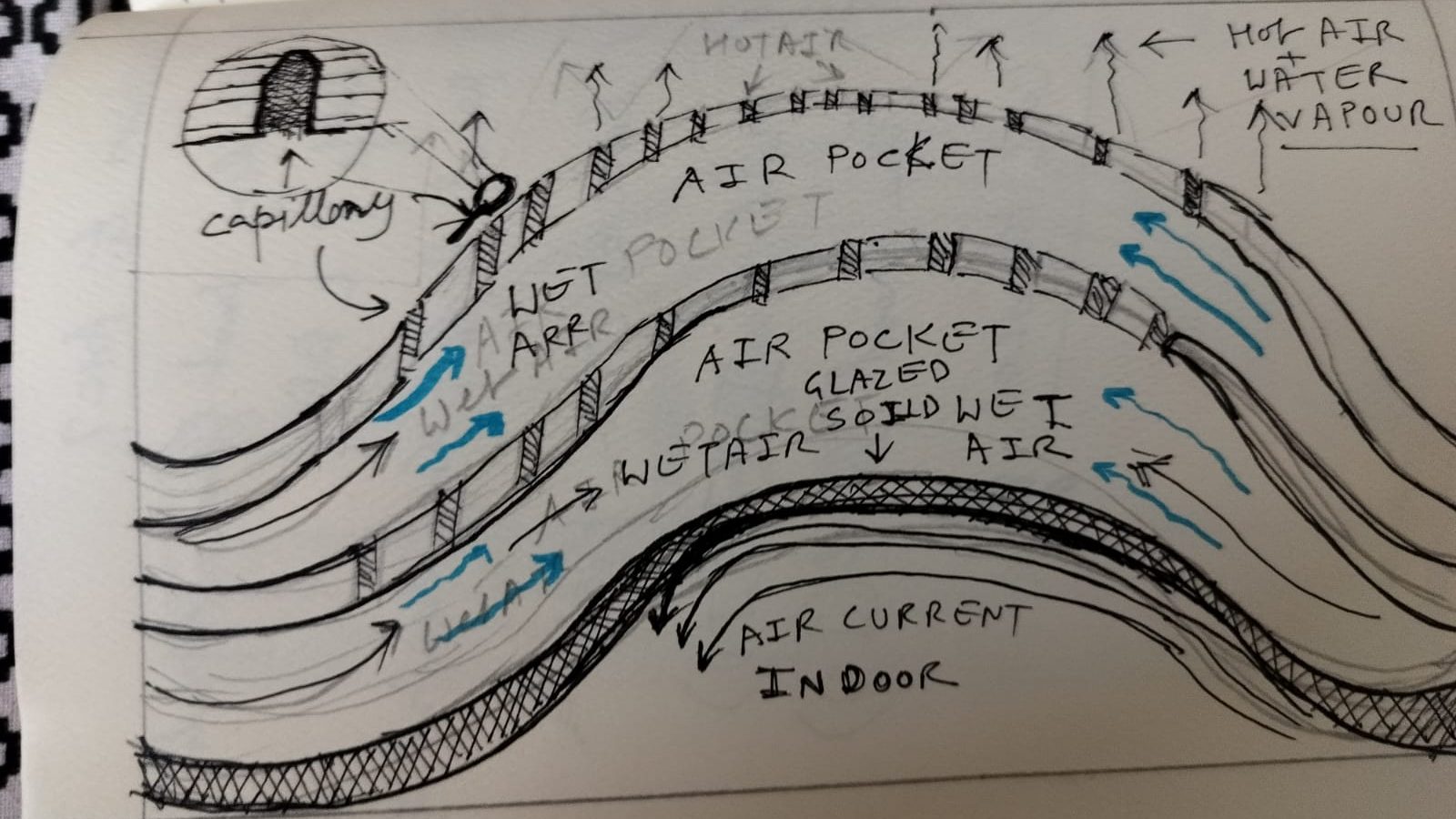

Bhubaneswar’s cool temples are made out of regionally found Laterite and Sand Stones. The material ‘stone’ is logistically and expense wise not an optimal choice. But it got me thinking about naturally occurring materials that have the same high insulating capacity.
It drew my attention to Terracotta, though the material has been not been used in Temple Construction in Odisha due to high availability of stones. There are the notable Terracotta Temples of Bengal in the same agroclimatic zone.
The addition of layered or honeycombed walls and a water conservation chamber beneath the rooms to cool down them down, emerged through later iterations. This idea requires extensive partnership and collaboration with architects, designers and terracotta practitioners to see the light of day.
Terracotta Cooling Bins: Low Cost Vegetable Preservation

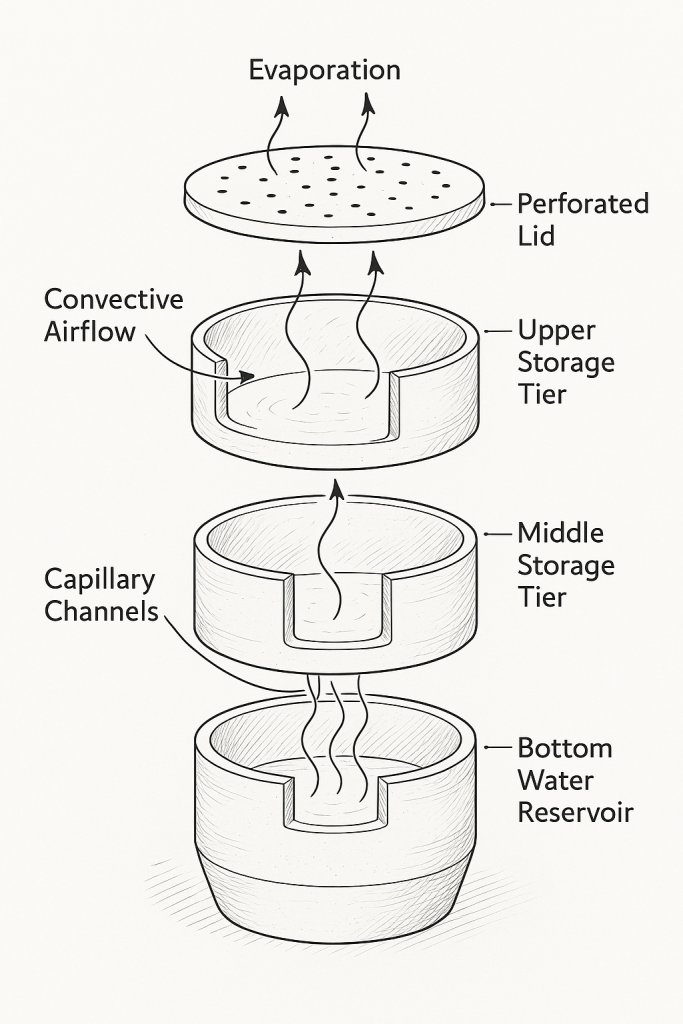

© 2025 Soham Bose. All rights of these above works reserved.
